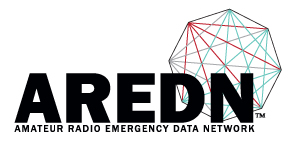Hi ...
My apologies if I have missed this somewhere. I see the listing for the firmware on the Readme file under software, but I can't find the firmware file anywhere.
Can someone please give me a pointer as I have a GL-150 arriving Saturday. :)
Many thanks,
julie mcgrew
ac0wn
You are here
GL-150 Firmware Location
Thu, 05/02/2019 - 19:51
#1
GL-150 Firmware Location
Theme by Danetsoft and Danang Probo Sayekti inspired by Maksimer


You'll find it here:
http://downloads.arednmesh.org/snapshots/trunk/targets/ar71xx/generic/
Look for a file named: aredn-???-???????-gl-ar150-sysupgrade.bin
Andre
-Damon K9CQB
any help appreciated. -- john KB4YFK
http://downloads.arednmesh.org/snapshots/trunk/targets/ar71xx/generic/ar...
The newest versoin can be found here:
http://downloads.arednmesh.org/snapshots/trunk/targets/ar71xx/generic/
*I would like to posit that the AR300M16 is a much better value than the AR150 and would encourage anybody reading this to prefer the AR300M16 for it's 2x2 MIMO capability. Sorry - just doing my best to inform on this important difference.
-Damon K9CQB
http://downloads.arednmesh.org/snapshots/trunk/targets/ar71xx/generic/ar...
They just updated it as of this post (as I was posting it).
-Damon K9CQB
Orv W6BI
Joe AE6XE
Thank you for working on this. Special thanks to ZL2WRW. I was reading your guys' Github posts on this action. It was very exciting. I use these devices to host RTL-SDR's for a remote receiver so I'm very familiar with them. I'm going install the USB libraries (USB power is already on by default), shove an RTL-SDR in the USB port, and try using rtl_tcp on this AREDN device. While I'm on this point, why don't we have the AREDN FW include the standard USB libraries as a default? This would allow users to use a thumb-drive or other USB devices right off the bat.
I have my GL-AR150 up and running right now (see photos) so I will let you know how stable this is. I have iperfSpeed and Meshchat running on it right now. The AR150 is only a SISO device so I'll only use it for edge links. I prefer the AR300 as it has a true 2x2 MIMO radio (also has AREDN compatible chipset).
While we're talking about wish lists, I would love to port AREDN to the GL-iNet GL-USB150 Microuter. This has the same chip as the AR150 and nearly identical OpenWRT load (with same 16NOR/64RAM) and would be the first USB AREDN device. We could connect to our local AREDN network on channel -2 with just a little USB dongle:
https://amazon.com/GL-iNet-GL-USB150-Microuter/dp/B06XTXKRMY/
Just wishful thinking. Thank you so much for this work - you guys are amazing.
-Damon K9CQB
https://static.gl-inet.com/www/uploads/2017/07/USB150_microuter_instructions_web_20170704.pdf
Here is the pinout for the GL-USB150 (see attached photos - the bottom photo is the UART pads circled). It does have a reset switch and all kinds of other serial/uart and GPIO pins.
I find it much easier to remove the case before messing around with the Microuter.
On the GL-iNet forum someone said you have to 'force off' the case off and then use tape to keep it on after that - this has NOT been my experience. I use a guitar pick to separate the two halves and then they click back together nicely when I'm done.
As a side note: I'd like to point out the inverted F antenna in the photo. It's not a very good antenna, but you can still hit your links from over 100ft away. There is a way to add an external antenna by removing the micro test point connector and solder a tiny .wfl connector - requires good soldering skills - I'll post that later.
-Damon K9CQB
Joe AE6XE
I am blown away. Thank you.
So now I can jam my AREDN USB into my laptop or even my smartphone (via an OTG cable) and hit any 2.4GHz AREDN node in range. This will be extremely convenient for some of us. Stay tuned for some photos of my GL-USB150 with some easy ways of making the the USB device's internal antenna have a more directional range. This is going to be fun.
On the GL-AR300 side, I sent you 2 different AR300's because there are 2 different versions. You should get them tomorrow.
The first one is the AR300M and it has 128MB NAND flash and 128MB RAM and it costs $45.
The second one is the AR300M16 and it has 16MB NOR Flash and 128MB RAM and it is $27.
I sent both just in case you need to make 2 different .bin's for them. I would rather only pay $27 if I can get away with 16MB of NOR Flash. After all, do we really need 128MB of NAND? Both of them have 128MB of RAM - that's all that matters, right?
-Damon K9CQB
Ian,
There's a Realtek USB to Ethernet chip built into the stick before it hits the Ethernet pins on the AR9331 chip. For those of us with no Ethernet ports on our laptop, this is a great tool.
They used one of the most common USB to Ethernet chips (Realtek RTL8152B). Upon its connection to the computer via a USB port, it will work as a USB Ethernet 10/100 adapter. Most OS's already have the driver built in (Linux, MAC, Windows). Once plugged in just treat it like the AR150 (minus the second LAN port).
The GL-USB150 Microuter is the result of basically cramming a USB to Ethernet adapter and an AR150 inside a USB stick (minus the second Ethernet port and USB host port on the AR150). (see photos)
If you're traveling and you need to hit some AREDN nodes, this is a better option than the AR150.
-Damon K9CQB
Notice the difference (which one is easier to travel with):
Damon, I have a Raspberry Pi with several services and the microuter running as a mesh node (photo). I've reserved the DHCP IP address of the Rpi and added the advertised services to the microuter. The microuter itself can resolve the Rpi's hostname and other mesh nodes can see the microuter just fine. But other nodes cannot resolve the hostname of the Rpi so they cannot use the advertised services. I'm sure there's something I'm not seeing which would solve this issue. What am I overlooking that would provide mesh-wide name resolution for the Rpi and allow the services to be accessible across the mesh? THX
I'm glad you go this figured out. I never thought about this use-case for the Microuter. This would replace a whole laptop/node setup that we have when setting up tactical nets. That means I can use a smaller battery and it'll last much longer than a full-up Ubiquiti or MikroTik node w/laptop.
-Damon K9CQB
Joe AE6XE
You're awesome. I'll send you an AR300 today. Obviously there is no hurry.
The LHG/LDF 2.4GHz boards are probably even higher priority to my guys as a few of the fellas have already bought LDF-2 and LHG-2 series devices.
I'll hit you on the side with shipment info on the AR300.
-Damon K9CQB
Thank you very much for the link. I'll report back any interesting findings. :)
73,
julie mcgrew
ac0wn
Imagine the following scene: A trauma center uses a public park as a triage area to evaluate the injured. You have pre-loaded and configured a dozen or more USB150's. You sign them out to all who need access to the network via their own/company laptops.
Not only are these a great alternative to connecting via access point, each of these laptops become a mesh node within the park / triage area... extending the coverage area every time another person plugs one into their laptop.
Andre, K6AH
-Damon K9CQB
Does the box already exist?
Bob W8ERD
If you bought this Raspberry Pi Zero W kit with OTG cable (it's how you connect the GL-USB150), and then connect it to this PiSugar 1200mAh Pi-Zero kit, you will have a totally self enclosed AREDN to WiFi system that will run for about 6 hours on that battery. The Amazon page for the PiSugar battery has the downloadable STL file to print a case or you can just use shrink-wrap like us losers. You'll need a MicroSD card with your favorite OS, preferably an OS that allows you to run your WiFi easily as an access point. I use 'hostapd' on Jessie Linux.
Here are the links to get the PiZeroW and battery:
Argon Forty Raspberry Pi Zero W Barebones Kit (comes with OTG & HDMI cable) $22:
https://www.amazon.com/Raspberry-Zero-Argon-Forty-Barebones/dp/B075FRRVLR/
Pisugar Portable 1200 mAh Lithium Battery Power Module $34
https://www.amazon.com/Pisugar-Portable-Lithium-Raspberry-Accessories/dp...
AREDN thanks you for purchasing via our Amazon link! ;-)
https://amzn.to/2YjAnwM
If you're worried you can pop the case and stick a heat-sink from a RasPi kit on the AR9331 chip. Then you can cut a square hole it the case with an exacto knife where the heat-sink is and pop the case back on. The heat-sink with protrude about 1mm, but it's pretty cool looking and works great.
-Damon K9CQB
Is there a procedure for this device?
thanks
jeff
The USB150 comes with OpenWRT pre-installed. Simply use its administrative screen to upgrade to AREDN using the sysupgrade file. The only thing that's a bit wonky about it is it defaults to IP 192.168.8.1. The manufacturer's setup doc is pretty good though: https://docs.gl-inet.com/en/3/setup/microuter/first-time_setup/
Andre, K6AH
thanks,
I now have a GL-USB150 wifi network, and a southmesh-20-v3 cabled network showing on my Linux Mint, but neither i can connect to. They try then fail over to one of my other wifi networks. Both green lights are on the Microuter. I have removed and re-inserted. I have disabled wifi, and re-enabled.
jeff
In case anyone is wondering, the GL-USB150 power requirements appear to be running around .18A @ 5.03v = roughly averaging around 1 watt. I'll have some more long-term average load numbers measured over time tomorrow. Just programmed and fired up my first unit with minimal distress (Nightly 906). I did have to perform a "reset" after firmware load in order to regain control of the unit, which did return online as "NOCALL" on 192.168,1.1 and then able to finish the setup.
I am then able to connect and see the normal "nocall", and it is waiting for me to do the setup.
I have tried this several times, entering the name and password, or sometimes just setting the password.
It then reboots to nowhere.
The "MeshNode2G" is not available, even if I disable and re-enable the wifi.
I again have to hold the reset for about 7 seconds, and the process starts all over.
I have tried holding the reset for 3 seconds but that doesn't seem to do anything.
I have tried removing the usb, and reinserting, no change.
Jeff
Perhaps enter node name and password and distance to farthest node.
I omitted setting a password on my first attempt and found the device
In nocall state on 192.168.8.1:8080. Then when you click save settings
It reboots on its own.
I plugged it back into my Mint computer, Right clicked the network icon, clicked on edit connections, and with the usb dongle inserted, i created a new connection that pointed to the unique name of the usb dongle , which in my case is enx00e04c360049.
Once that was done, and i verified it's IP4 was DHCP, then I just gave the connection a meaningful name, then connected to it.
jeff
Denis KD1HA